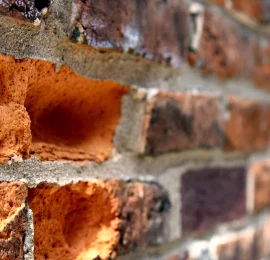Arrange a Chimney Sweep Today for a Tidy and Safe Fireplace
Arrange a Chimney Sweep Today for a Tidy and Safe Fireplace
Blog Article
Opening the Tricks of Lasting Stonework Building Practices for Eco-Friendly Buildings
In the realm of modern building and construction, the search of sustainable practices has actually ended up being paramount. Amongst the myriad techniques to green building, sustainable masonry construction attracts attention as a tried and true and durable approach that holds a riches of untapped potential. From the selection of materials to ingenious construction methods, the keys to accomplishing sustainability within stonework construction are diverse and intriguing. By checking out the benefits, materials, strategies, and future trends of lasting masonry, a deeper understanding of how these techniques can shape the future of eco-friendly buildings arises.
Advantages of Lasting Stonework Building
Embracing lasting stonework building practices not just decreases environmental influence however likewise offers lasting financial benefits to builders and communities. By utilizing products like recycled bricks, obstructs, and stones, builders can considerably decrease the carbon impact of their projects while advertising resource efficiency. Furthermore, sustainable stonework building techniques, such as appropriate insulation and thermal mass homes, can enhance power efficiency within structures, resulting in reduced operational costs gradually.
In addition, the durability and durability of masonry structures add to long-lasting financial benefits. Structures built making use of lasting stonework techniques commonly call for less upkeep and repair, equating to set you back savings for home builders and home proprietors. The longevity of masonry products additionally ensures that structures continue to be secure and protected, minimizing the demand for frequent restorations or substitutes.
Eco-Friendly Masonry Products
Making use of green stonework materials is a critical action towards improving the sustainability of building techniques and reducing ecological influence while maximizing long-term economic advantages. Lasting masonry materials are sourced, generated, and utilized in a manner that lowers total environmental impact. Materials such as recycled blocks, recovered rock, and lasting cinder block are coming to be increasingly preferred options for eco-conscious builders. Recycled blocks, for instance, not just draw away waste from land fills yet likewise need less energy to create contrasted to new bricks. Reclaimed stone offers an unique aesthetic appeal while decreasing the need for new quarrying. Lasting concrete blocks incorporate recycled aggregates and might include enhanced insulation homes, contributing to power effectiveness in buildings.
Furthermore, natural products like adobe, rammed planet, and straw bales supply outstanding thermal mass residential or commercial properties, lowering the requirement for home heating and cooling power. These products are commonly locally readily available, promoting regional economic situations and decreasing transportation-related carbon exhausts. By selecting eco-friendly stonework materials, building tasks can considerably lower their environmental impact and contribute to the development of much healthier, much more lasting built atmospheres.
Energy-Efficient Masonry Methods
Energy effectiveness plays a vital duty in boosting the sustainability of stonework construction practices. One essential energy-efficient masonry technique is the use of thermal mass, which you could look here involves including thick products like concrete or block into the building's structure to absorb and save warmth.

Technologies in Sustainable Masonry
Current advancements in sustainable masonry practices have caused ingenious strategies that are reshaping the building market. One such innovation is the advancement of self-healing concrete, which makes use of bacteria installed within the concrete to recover cracks autonomously. This innovation not only reduces upkeep costs yet likewise improves the durability of stonework structures, adding to their sustainability.
Another noteworthy advancement is the usage of recycled aggregates in masonry building - masonry contractor. By including products such as smashed ceramic waste or recycled glass into concrete mixes, building contractors can reduce the environmental effect of building and construction projects while maintaining architectural integrity. This technique not just draws away waste from land fills yet also saves all-natural sources, making it an essential advancement in sustainable masonry construction
Additionally, the combination of digital design tools, such travertine stamped concrete as Building Info Modeling (BIM), is transforming the method masonry structures are planned and constructed. BIM permits more exact estimations, decreased material wastage, and boosted power performance, inevitably causing even more sustainable building techniques. These advancements jointly signify a promising future for lasting stonework building in the era of environmentally friendly buildings.
Future Trends in Stonework Sustainability
With the cutting-edge strides made in sustainable masonry techniques, the future patterns in masonry sustainability are positioned to additional transform the construction sector. Among the key patterns shaping the future of masonry sustainability is the raised assimilation of modern technology. Advancements such as Building Info Modeling (BIM) and virtual reality simulations are being made use of to enhance masonry building processes, leading to lowered material waste and boosted power efficiency in structures.
Additionally, the growth of novel lasting materials is established to play a considerable role in boosting the eco-friendliness of stonework building. masonry contractor. Developments like self-healing concrete, recycled accumulations, and bio-based binders are acquiring grip for their capability to minimize ecological impact while keeping structural honesty

Conclusion
In final thought, sustainable stonework building and construction practices provide numerous benefits for environmentally friendly buildings. By making use of green materials and energy-efficient methods, stonework can contribute to an extra sustainable built environment. Developments in sustainable stonework are continually being created to better boost the environmental performance of buildings. Looking in the direction of the future, the fad of stonework sustainability is expected to grow, resulting in more environmentally pleasant and energy-efficient building and construction methods in the years ahead.
Report this page